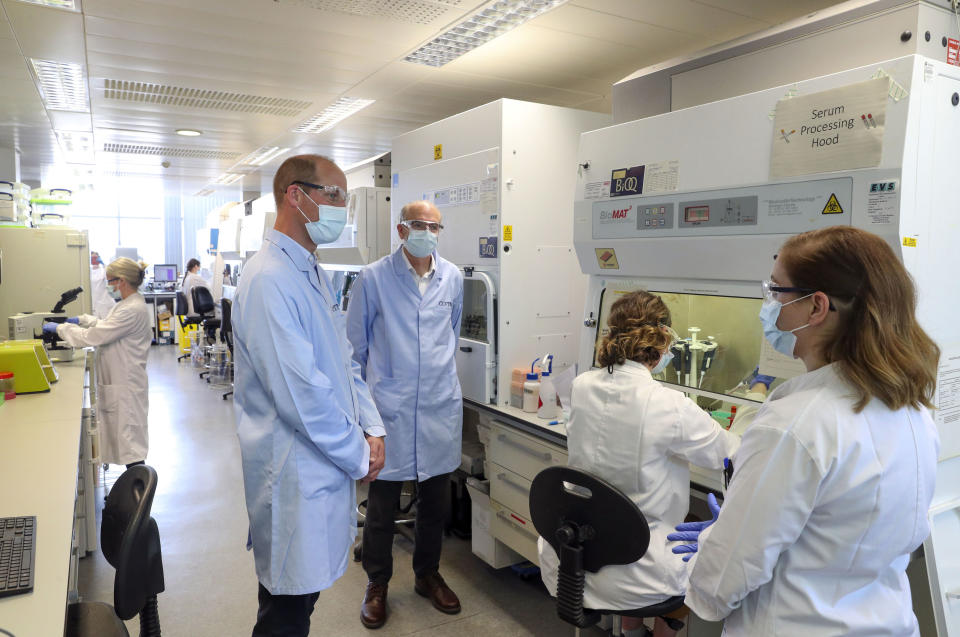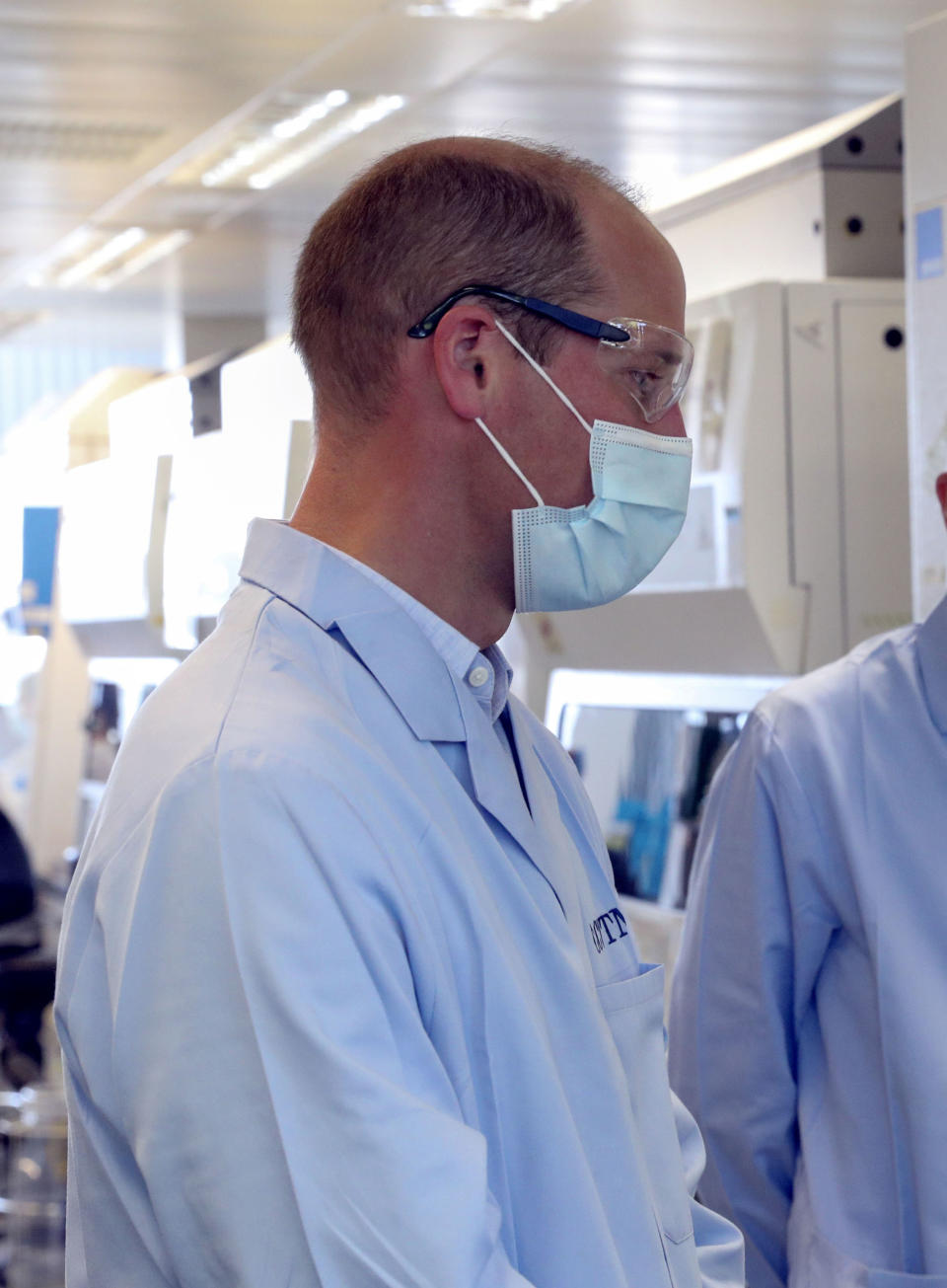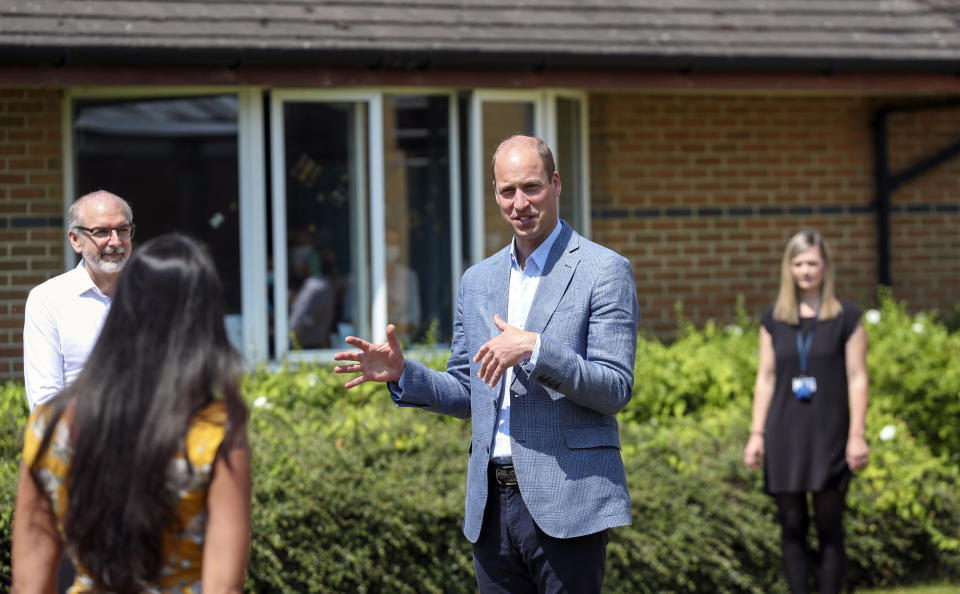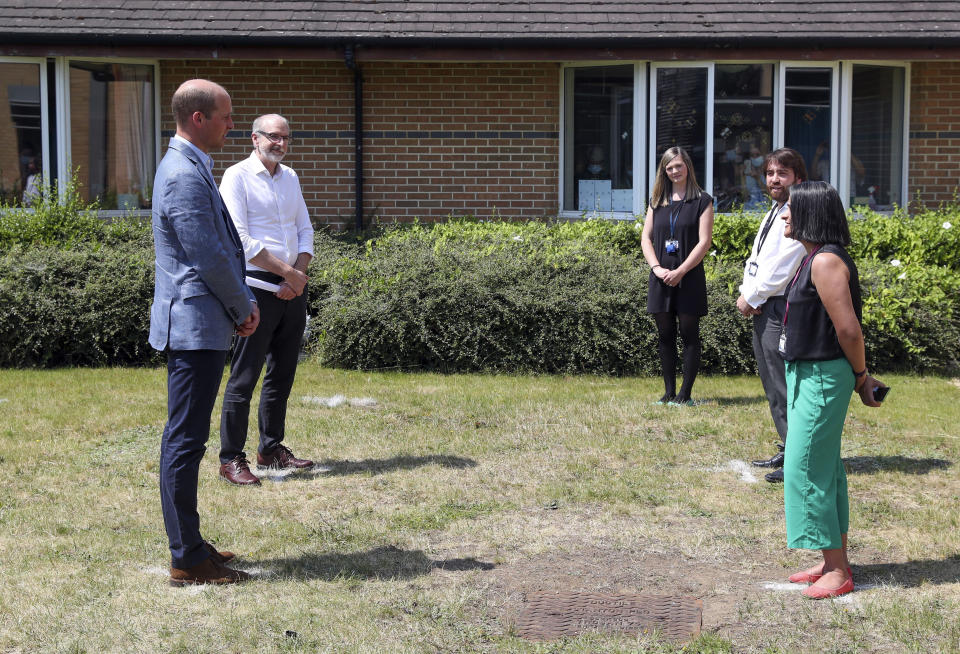Prince William wears face mask to visit those testing coronavirus vaccine
Prince William wore a face mask as he visited volunteers who are trialling a potential coronavirus vaccine in Oxford.
William, 38, said his family was proud of the “incredibly exciting” and “fascinating” work being done by researchers to find a vaccine for COVID-19.
The Duke of Cambridge went to the Oxford Vaccine Group facility at the Churchill Hospital in the city on Wednesday, where he carried out an indoor engagement in protective gear, and met workers outside in a socially distanced way.
He met Professor Sarah Gilbert who is leading the trial and Professor Andrew Pollard, director of the vaccine group.
There are more than 4,000 people enrolled in the UK on the vaccine trial, with enrolment of a further 10,000 people planned as researchers test the vaccine – known as ChAdOx1 nCoV-19.


Read more: Prince William and Kate tell amputee, five, they're 'so proud' as he fundraises £1m for hospital
Talking to volunteers about their motivations to be in the trial, he asked one woman: “Were you just a willing guinea pig?”
Prof Pollard said the volunteers were “crucially important”, to which William said: “You’re in good hands, I’m sure.”
The duke spoke to the team about their hopes of success, with William saying if it was announced the Oxford team had “cracked it” people would “breathe a huge sigh of relief”.
He said: “People want there to be some sort of finality to it.”
The prince did ask how they would feel it it didn’t work out, with Prof Gilbert saying they were hopeful they would “see something”.
“The only question is how good it is and how long it will last,” she added.


Read more: 'Two future Queens!': Royal fans delighted as Camilla and Kate carry out first joint engagement
William also gave a nod to the virus’s apparent origins, and said he’d recently been told by an expert there were potentially 1.5million viruses which “could hop from animals into humans”.
He added: “Hopefully this will be a wake-up call to people.”
Prof Pollard told William: “It’s success for the country and the world if these vaccines work, not for us.”
William’s mask is the first time he has been seen with protective equipment during a visit, but his uncle, Prince Edward, had one on at a recent visit where he helped prepare food.
Sophie, the Countess of Wessex, has also worn gloves or a mask on some of her voluntary visits.
However most royals have stayed outside, where they don’t need a covering.
Before the visit on Wednesday, William had a video call with some of those who are on the team, including AstraZeneca’s CEO Pascal Soriot and Oxford University’s vice chancellor Professor Louise Richardson.
The father-of-three told them he had “always been interested in medical science” and said: “It’s the most incredibly exciting and very welcome project that you’re all doing which is why it’s fascinating.”


Read more: Royal warning that coronavirus pandemic is putting women at greater risk of sexual violence
Prof Richardson said the visit from the duke was “a real shot in the arm” for the team, which is working “flat out, every weekend, every night”.
She said it was important to the team that they keep the price of the vaccine reasonable especially for low and middle income countries, and for there not to be profiteering.
William said: “My family is very proud of everything that is going on here, particularly with the Oxford research side of things and the collaboration you are showing with AstraZeneca, I think it’s fantastic.

“If we can amplify and exemplify what is going on here to the rest of the world, then like you said Pascal, that’s going to be the quickest and best way to end everyone’s problems really, so please keep up the good work and just a huge well done.”
Many royals are starting to get back to in-person engagements, following social distancing rules and staying 2m apart.
William had his temperature checked ahead of one engagement, while Charles and Camilla have so far just worked outside.
Kate also got back to face-to-face engagements when she visited a garden centre, but it’s likely most visits will continue to be virtual.




